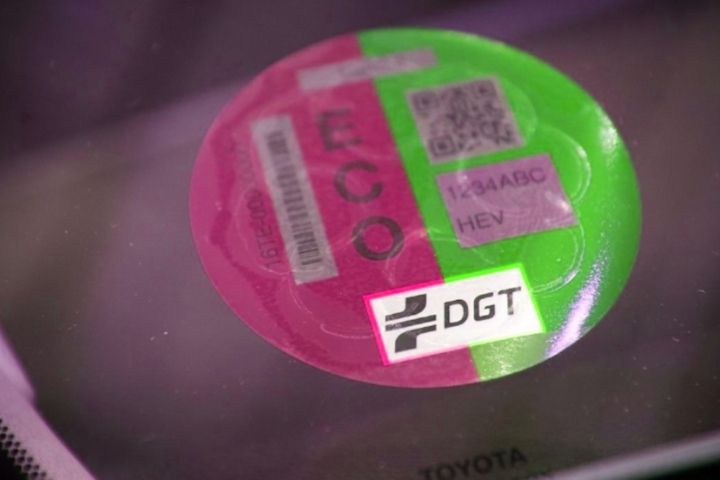We explained about DGT labels in this article. Awareness about the environment is growing and the rest of the world, which means that every time there are more projects and initiatives aimed at reducing pollution or climate change. One of the recent initiatives carried out, not without some controversy, are the labels for vehicles created by the General Directorate of Traffic.
The automotive sector is one of the most worrying in environmental issues, which is why, in recent years, it has been forced to incorporate numerous changes, including the labels we are talking about today. If you want to know more about them, keep reading because today we will tell you what exactly they are and what the DGT labels are for.
Also Read : The Impact Of Technological Advances On Privacy
Table of Contents
What Are DGT Environmental Labels
DGT labels, also called environmental labels, were created as part of the National Plan for Air Quality and Protection of the Atmosphere 2013-2016 (Air Plan). Its objective is to positively discriminate against vehicles that generate fewer emissions and, therefore, are less polluting for the environment.
These can be used in different cases, such as, for example, the restriction of some vehicles to cities in times of great pollution. On the other hand, they are also used to reward the most ecological vehicles, allowing them, for example, to circulate on the bus-HOV lane or pay less for public parking.
These labels will be implemented in more and more cities, which is why, in the coming years, they will become a mandatory and common sign on most vehicles.
Currently, there are four environmental labels created by the DGT, which classify vehicles into four types, depending on their environmental impact and emissions: 0 Emissions, Eco, C and B. We tell you the characteristics of each of them below :
- Label 0 Emissions (Blue): Indicates which are the least polluting vehicles. This label can be used by battery electric vehicles (BEV), extended range electric vehicles (REEV), plug-in hybrid electric vehicles (PHEV) with a range of 40 km or fuel cell vehicles.
- Eco Label (Green and Blue): Generally, this category includes hybrid vehicles, gas or both. Plug-in vehicles with autonomy less than 40 km, non-plug-in hybrids (HEV), vehicles powered by natural gas and gas (CNG and LNG) or liquefied petroleum gas (LPG) are entitled to this label.
- Label C (Green): This label is one of the most common and can be used by internal combustion vehicles that comply with regulations. Petrol cars and light vans that have been registered as of January 2006 and diesel as of September 2015 may carry this label. Also included are vehicles with more than 8 seats and heavy, both petrol and diesel, registered since 2014.
- Label B (Yellow): This classification is reserved for the least efficient on the list. Internal combustion vehicles that, although they do not meet the latest emissions specifications, do meet the previous ones. This label must be used by passenger cars and light vans with gasoline registered since January 1, 2001 and diesel as of 2006. Also those vehicles with more than 8 seats and heavy, both gasoline and diesel, registered since 2006.
Vehicles that are not on this list belong to the most polluting, so they are not entitled to any environmental label.
How Do I Know Which Environmental Label My Car Needs?
If you are not sure which label corresponds to your vehicle (or if none corresponds to it) you can check it by entering your license plate number.
You can check which environmental label corresponds to the vehicle or, in case of not meeting the requirements, find out the reasons why you are not entitled to it.
Once the verification has been carried out, if you need to acquire the corresponding environmental label, you can do so for an approximate price of $5 in authorized establishments: Post Offices, the CETRAA network of workshops and other authorized workshops, Administrative Managers or the Institute of Studies Automotive. In the case of vehicle fleets, the labels can be obtained through the Ganvam association.
We hope we have solved your doubts about the DGT labels. Remember that if you hire a rental car you will not have access problems to the big cities, since there are cars that are newly registered.
Still Don’t Know How To Book A Rental Car?
Getting a new car has never been so quick and easy! You will be able to complete the entire process online in less than the duration of a Netflix episode. To do this, you only need to choose your favorite car from the catalog , select how many months you want to have it (from 24 to 60 months, depending on the model) and the number of kilometers you plan to do each year.
Once you have personalized your renting, all that will be left for your advisor to enter is your personal data related to your solvency and the system will calculate the risks to approve or deny the operation. Clever! In a few minutes you can sign your contract online and in 15 business days we will take your car to the place you indicate. And completely free!

